27 Best Things to Do in Oslo, Norway | 2024 (with Photos)

Oslo, Norway's capital city, offers a plethora of exciting activities for tourists and locals alike. There are things to do in Oslo for everyone, from touring famous landmarks to learning about Norwegian history.
Visit the Oslo Opera House, the Viking Ship Museum, and the Norwegian Folk Museum to gain an understanding of Norwegian history.
Visiting Oslo, Norway, offers visitors looking for an exceptional experience and an exciting time with its cultural history, world-class museums, and natural beauty.
Most Recommended Thing to Do
Top Choice Hotel
Grand Hotel Oslo
Our Top Choice Restaurant
Our Top Choice Bar for Nightlife
Best Time to Visit
Summer for long daylight, winter for snowy beauty.
Average Temperature
The average temperature in Oslo, Norway is cool.
Transportation Options
Buses, trams, metros, ferries, bikes, electric scooters available.
Average Cost ($, $$, $$$)
$$
My Top Recommendation
Oslo, with its charming cobblestone streets and vibrant outdoor cafes, is the perfect place to immerse yourself in the local culture and history—the Vigeland Sculpture Park is a must-visit for art enthusiasts and nature lovers alike, offering a serene escape from the bustling city life.
For a truly unique experience, I recommend taking a leisurely stroll along the picturesque waterfront of Aker Brygge, where you can indulge in delicious seafood at one of the many waterfront restaurants or simply sit back and watch the boats sail by, soaking in the beauty and tranquility of the Norwegian capital.
What You'll Need to Bring
- Warm clothing, especially during winter months.
- Comfortable walking shoes.
- Camera or smartphone for capturing memories.
What Not to Miss
- Royal Palace
- Vigeland Sculpture Park
- Akershus Fortress
- Oslo Opera House
- Holmenkollen Ski Jump
What to Avoid
Avoid being loud and disruptive in public places. Also, avoid wasting food or resources as it is considered disrespectful.
Table of Contents
1. Walk up The Roof of The Oslo Opera House
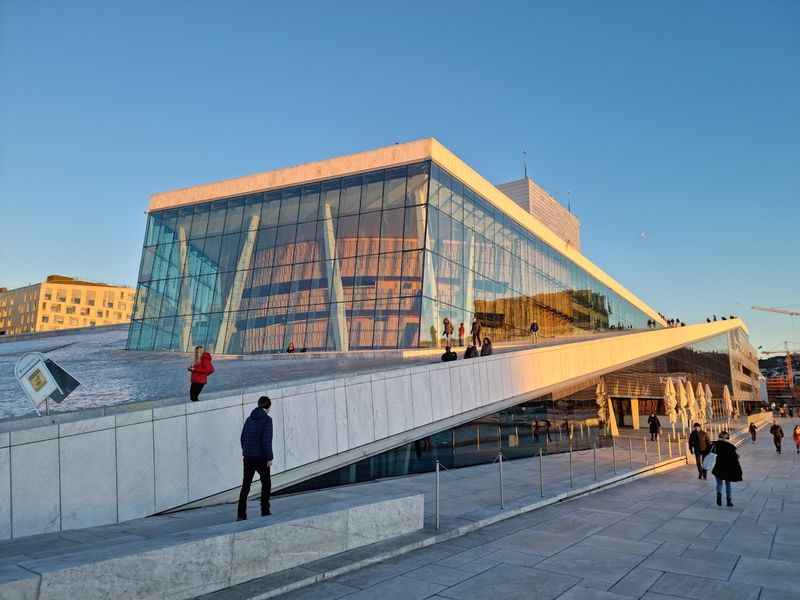
The Norwegian National Opera and Ballet's home, the Oslo Opera House, is an architectural wonder that entices people to "walk up the roof."
The building's distinctive design with a sloping roof that slopes to ground level has been an iconic emblem of Oslo's skyline since its ceremonial opening, which was attended by His Majesty King Harald.
For art lovers who can appreciate the flawless blending of art and architecture in this modern masterpiece, a visit to the opera house is a must.
Both the interior and outside of the opera house contain several breathtaking works of art. Another Oslo attraction, the Munch Museum, is nearby.
2. Step back in time at the Viking Ship Museum

The Viking Ship Museum is a historical museum that allows visitors to step back in time and immerse themselves in Viking history.
This museum, which is housed in Oslo, features three exceptionally well-preserved Viking-era burial ships that offer a window into the historical seafaring culture and the wooden ship of the Vikings.
Unfortunately, the Viking Ship Museum is temporarily closed until 2026 after 95 years. However, while visiting Oslo, travelers can still explore other attractions in the city center or downtown Oslo.
An effort that will allow them to continue their journey of discovery and appreciation for Norwegian history and culture.
3. Visit the Norwegian Maritime Museum
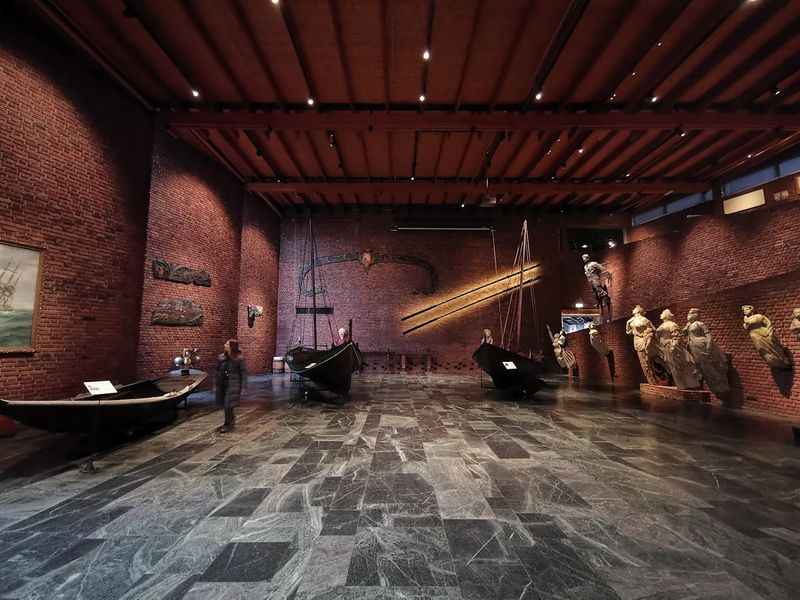
The Norwegian Marine Museum, which is situated in West Oslo, is a fascinating attraction for both maritime enthusiasts and history buffs.
This museum offers a thorough look into Norway's rich maritime heritage by showcasing marine archaeology, artwork, and wooden ships.
From the museum's vantage location, visitors may also take in expansive views of the magnificent Oslo fjord.
The Norwegian Maritime Museum is a must-visit for anybody interested in learning about Norway's seafaring legacy.
Additionally, it is conveniently located next to other famous museums, such as the Fram Museum, the Kon-Tiki Museum, the Norwegian Museum of Cultural History, and the Viking Ship Museum.
4. Oslo Fjord: Go on an Oslo Sightseeing Cruise

The Oslo Fjord is a breathtaking natural wonder that offers an unforgettable sightseeing experience through a cruise. The Fjord was the site of Germany's invasion of Norway in World War II.
The Fjord comes alive with thrilling music and events in the summer months. Running along its hiking trails will provide you with a beautiful glimpse of the coastline.
Some locals even assert that between September and March, there may be a slight possibility of seeing the northern lights in the Fjord, thus to its appeal as a must-see location for lovers of both history and nature.
5. Go See The Norwegian National Museum
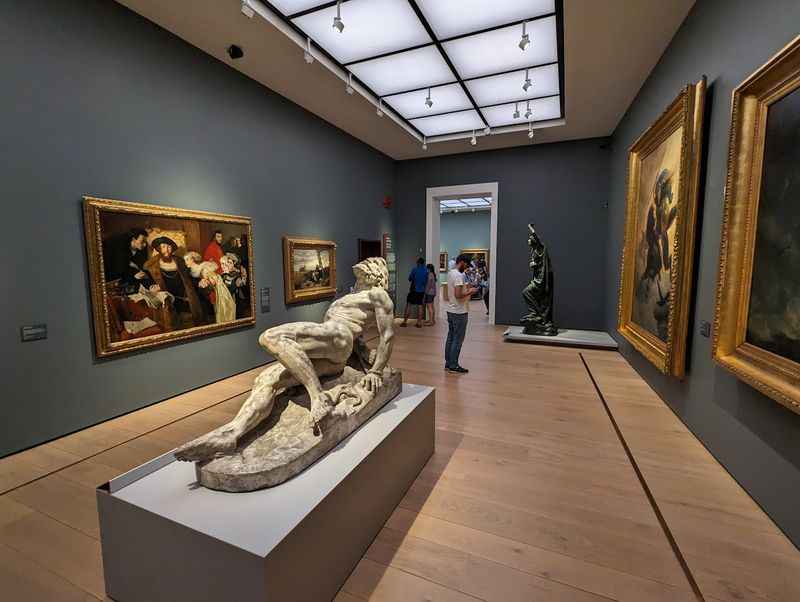
The Norwegian National Museum, often known as the National Museum of Art, is a veritable treasure trove that appeals to both art lovers and history buffs.
Visitors to the museum are welcome to explore the National Gallery and Museum for Contemporary Art, where they can marvel at a sizable collection of works by Norwegian and foreign artists.
The museum offers a rich and varied cultural experience that offers insights into Norway's artistic past, from classical treasures to modern works.
After having a great time visiting this Museum, travelers can continue their sightseeing by going to the Oslo Cathedral.
6. Visit The Ibsen Museum
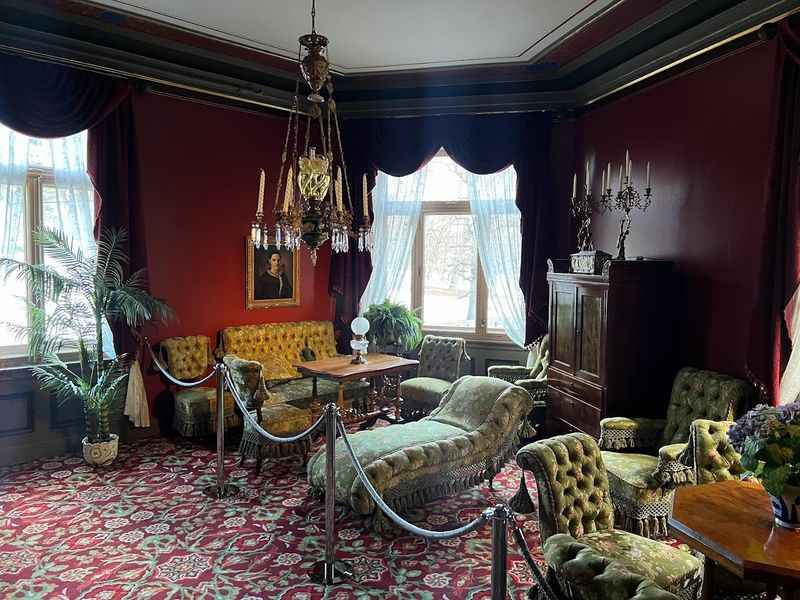
The Ibsen Museum, which is situated in Oslo, is a popular attraction for literature enthusiasts and admirers of the great playwright Henrik Ibsen.
Ibsen lived in this now-museum, which provides insight into his life and works as a famed Norwegian playwright.
The Ibsen Museum offers a guided tours to learn about the life and contributions of one of Norway's most renowned writers, and it is conveniently located next to the Royal Palace and Palace Park.
Please be advised that although the museum is presently closed temporarily, it will soon reopen and be a must-see location for literature enthusiasts.
7. Spend the morning at the Astrup Fearnley Museum of Modern Art
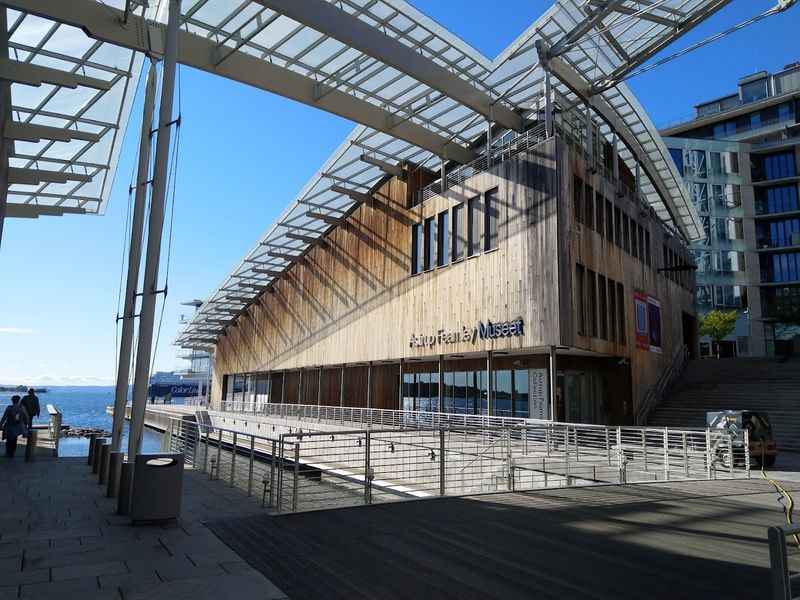
The Astrup Fearnley Museum of Modern Art is a must-visit destination for art afiocionadios seeking a captivating contemporary art experience.
This privately-owned museum features a diverse collection of modern art, including works by internationally renowned artists.
From thought-provoking exhibitions to immersive installations, the museum offers a morning of artistic exploration and inspiration.
Conveniently located, the Astrup Fearnley Museum is just a short 6-minute drive away from the iconic Gol Stave Church, making it a perfect addition to your Oslo itinerary for a day filled with art and culture.
8. Visit the National History Museum and Botanical Garden
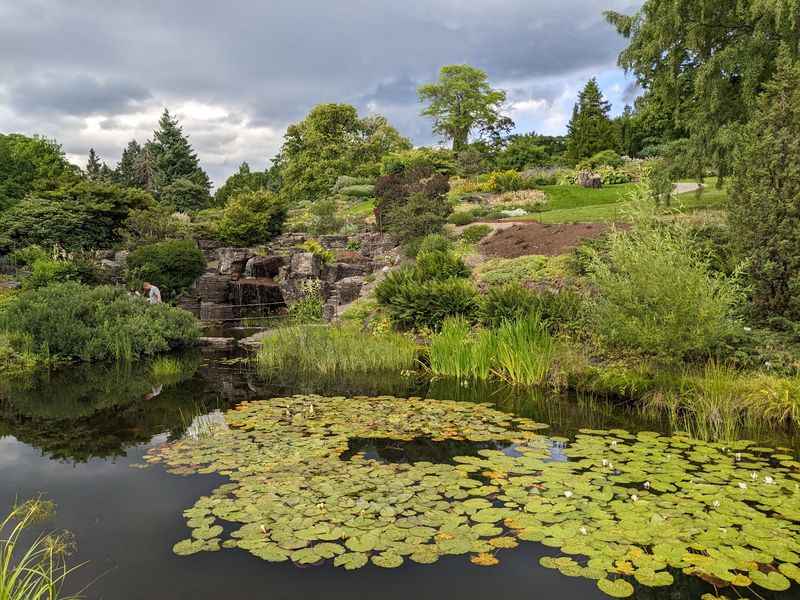
The University of Oslo's National History Museum and Botanical Garden is a hub of natural history and floral marvels.
As the oldest and biggest natural history museum in Norway, it provides an engaging tour through the nation's rich biodiversity and evolution.
The museum, which has its origins in the University Botanical Garden, houses a sizable collection of plants, animals, fossils, and minerals.
A trip to this famous museum offers a rare chance to see the wonders of nature, discover the natural history of Norway, and take in the splendor of its botanical garden.
9. Walk Around The Tjuvholmen Sculpture Park
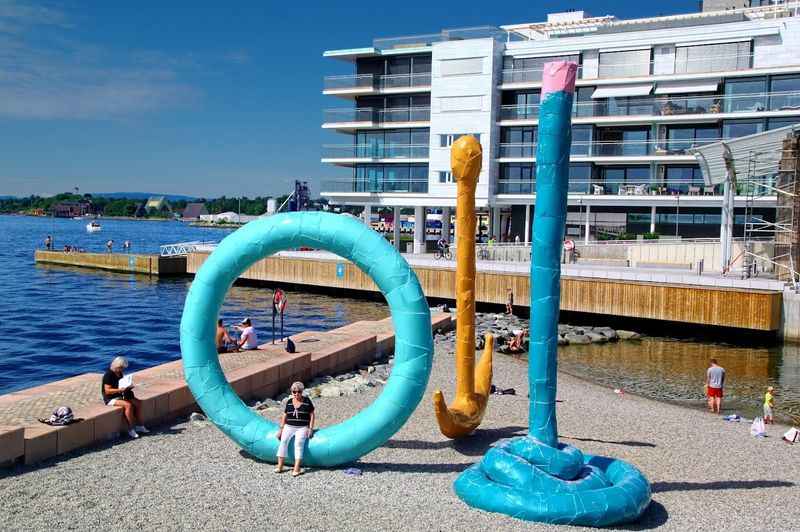
Oslo's Tjuvholmen Sculpture Park, which features an excellent collection of modern sculptures, is a charming refuge of the arts.
The popular sculpture "Eyes," made by the famous sculptor Louise Bourgeois, is among the noteworthy items.
You'll be enthralled by the artistic marvels on exhibit as you stroll through the park amid the picturesque surroundings.
The park's attraction is increased by the fact that it provides a panoramic view of the magnificent Akershus Fortress.
For individuals who love art and want to enjoy the beauty of outdoor sculptures in a peaceful environment, it is a must-visit location.
10. Visit the Norwegian Museum of Science & Technology
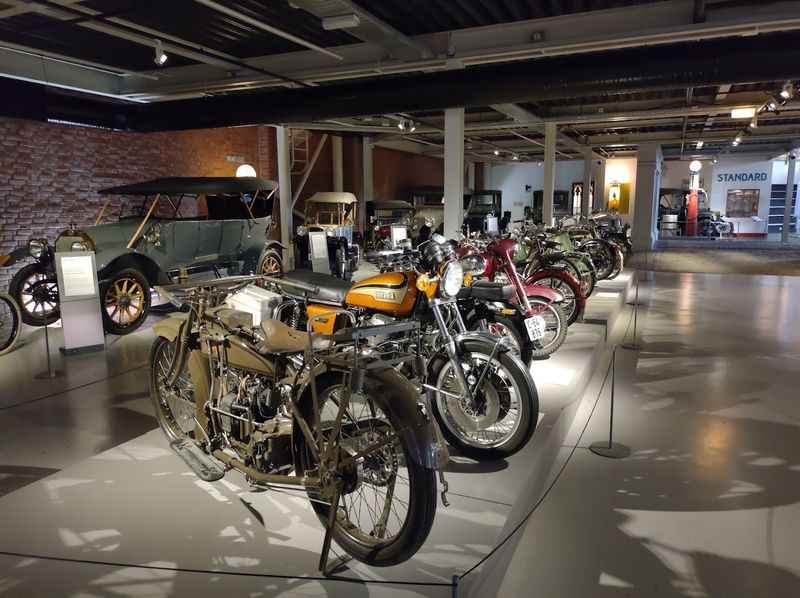
The interesting Norwegian Museum of Science and Technology is a great attraction for inquisitive minds of all ages.
This museum has a long history, beginning in the Viking Ship Museum's basement and growing into a hub of scientific and technological wonders.
This museum offers a distinctive fusion of education and enjoyment, from engaging exhibitions and hands-on activities to interactive displays and hands-on activities.
For individuals who are enthusiastic about science, technology, and the wonders of innovation, this museum is a must-visit.
11. Take a Free Walking Tour
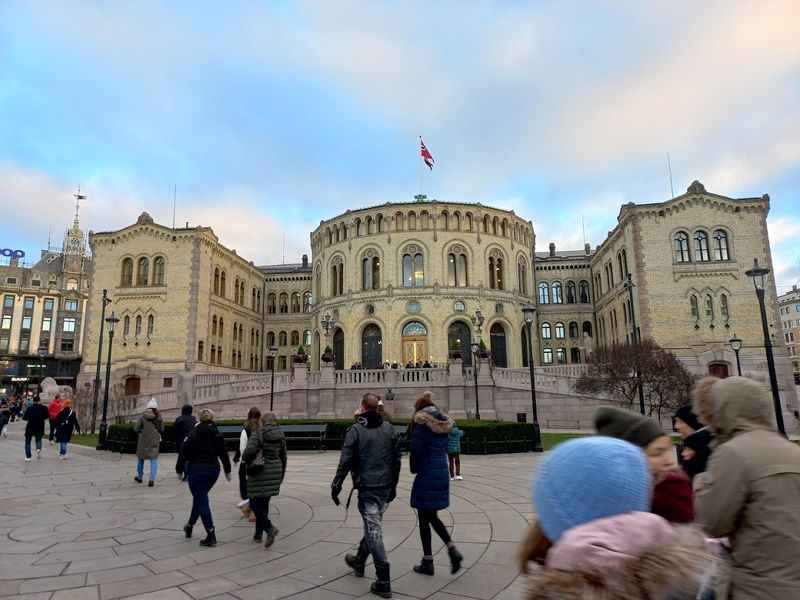
A great way to see the best of Oslo on a budget is to take a free walking tour of the city's lovely streets.
The Oslo Central Station, a transit hub and a representation of the modernism of the city, may be one of your stops.
Guided tours will provide intriguing information about Oslo's history, culture, and architecture as you travel.
At the conclusion of your tour, make sure to visit Oslo's main shopping street to purchase souvenirs or indulge in regional cuisine.
A free walking tour is an enjoyable and cost-effective way to experience the charm of this lovely city.
12. Take a Guided Walk Through The Nordmarka Forest
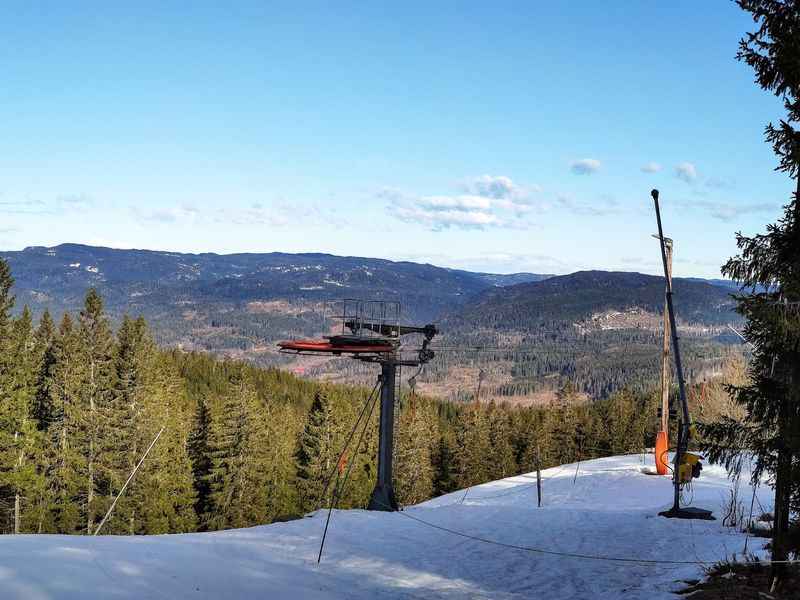
The tranquil Nordmarka Forest is the ideal place to take a guided walk if you want to get close to nature and take in the natural splendor of the area around Oslo.
With convenient access by metro or tram from the city center, you can quickly find yourself immersed in the tranquility of the forest.
A skilled guide may share intriguing information about the history and culture of the region as well as insights into the local flora and animals.
If you're feeling very courageous, you may finish your journey with a daring activity like a ski jump to add an adrenaline-pumping experience.
13. Go Enjoy Yourself at The Mathallen Food Hall

For foodies, the Mathallen Food Hall in Oslo is a must-visit location. In a lively and bustling environment, this indoor food market provides a wide variety of culinary delights, from traditional Norwegian fare to international cuisine.
Mathallen is a food lover's heaven with its distinctive mix of food vendors, specialty shops, and restaurants.
Additionally, if you're in Oslo around Christmas Time, take advantage of the Christmas markets, where you may sample the joyous foods and customs of the Norwegian holiday season.
14. Visit The Rådhuset in Oslo City Hall
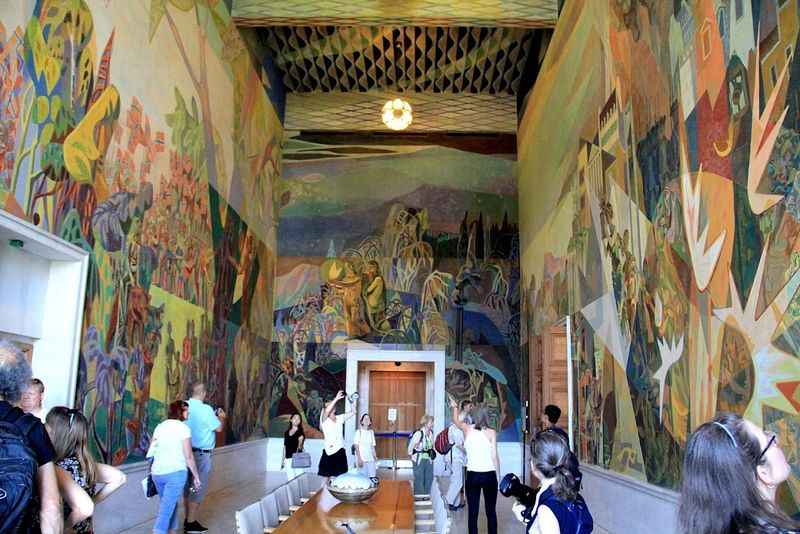
A notable monument in Oslo with a long history is the Rådhuset or Oslo City Hall.
The World War II hostilities prevented the City Hall structure from being finished earlier, yet it nevertheless remains a testament to tenacity and willpower today.
The Rådhuset is the venue for a number of occasions and celebrations, including the illustrious Nobel Peace Prize presentation conducted each December.
For anyone interested in Oslo's history and culture, this renowned structure is a must-visit location.
Visitors may explore the great architecture and intricate artwork that adorn its interior of the City Hall.
15. Visit the Holmenkollen Ski Museum and Tower
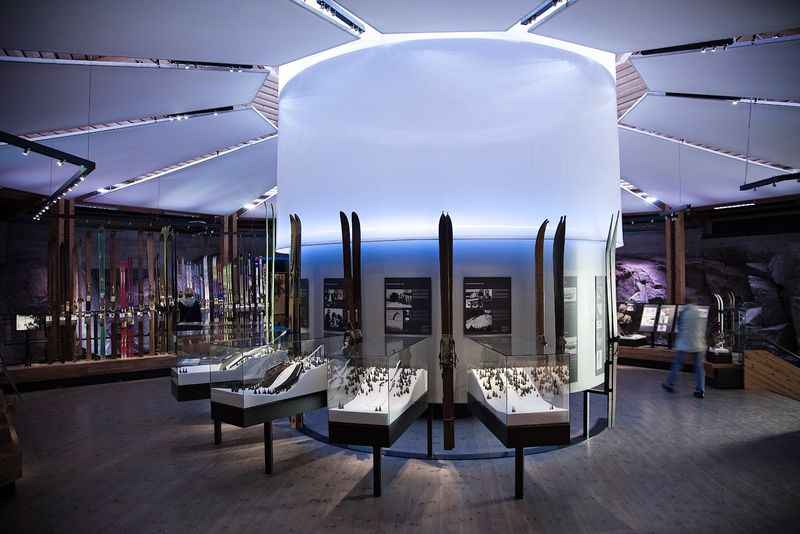
At the foot of the renowned Holmenkollen ski jump stands the Holmenkollen Ski Museum and Tower.
The oldest ski museum in the world. It provides a fascinating look into the skiing history of Oslo and Norway.
Visitors can explore the museum's impressive collection of skiing artifacts, including historic skis, clothing, and equipment.
The museum also displays how skiing methods and gear have changed over time.
Furthermore, the Holmenkollen ski jump tower's panoramic views from the summit provide stunning panoramas of Oslo and the surrounding area. It is less than a 10 mins drive to the nearby Oslo Winter Park.
Cross-country skiing contests can be seen close by, further enhancing the immersive experience of this famous Oslo attraction.
16. The Norway's Resistance Museum

When it comes to learning about Norway's domestic history during World War II, there is no better place to go than Norway's Resistance Museum.
The museum is housed in the famed Akershus Fortress in Oslo. This museum provides a thorough understanding of the resistance movement, the difficulties Norwegians had during the German occupation, and the initiatives taken by Norwegian resistance fighters.
Visitors can obtain a better knowledge of Norway's participation in the war and the resiliency of its people through exhibitions, antiques, and interactive displays.
It's a stimulating and instructive event that provides insight into a significant period of Norway's history.
17. Scooter Tour Through The Aker Brygge Neighborhood
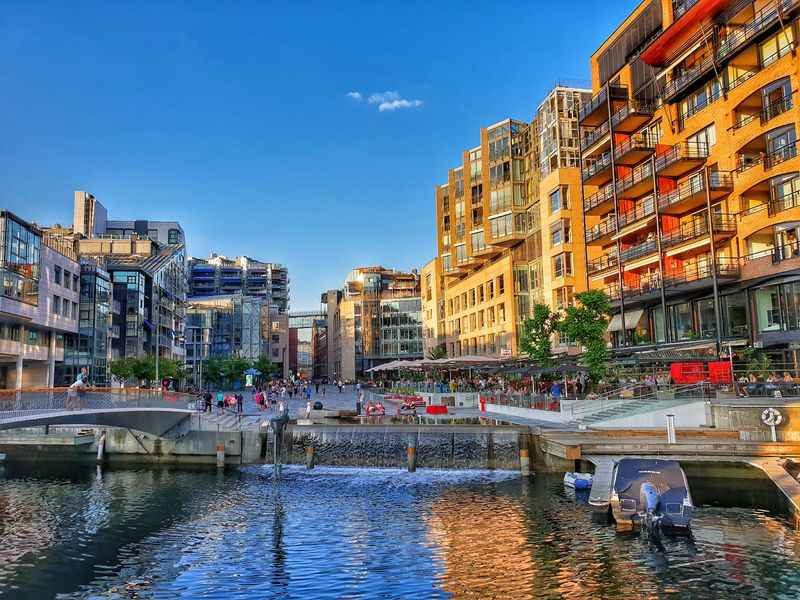
The Aker Brygge district in central Oslo may be conveniently and amusingly explored by taking a scooter tour of it.
Aker Brygge is a thriving waterfront neighborhood renowned for its cutting-edge buildings, hip stores, and energetic ambiance.
You can explore the area's cultural attractions while riding a scooter, such as the spectacular Astrup Fearnley Museum of Modern Art and the Nobel Peace Center.
It's a fascinating and fun way to take in the sights and sounds of this vibrant area of Oslo.
18. Travel Back in Time at The Norsk Folkemuseum
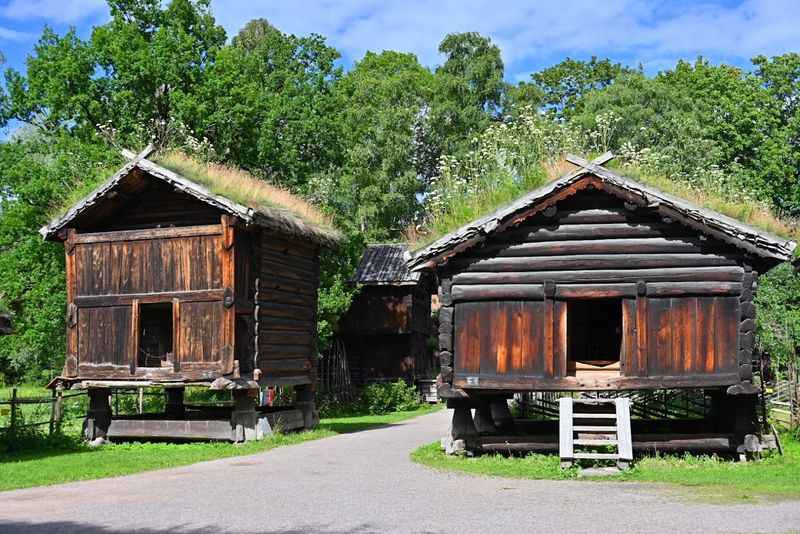
A wonderful voyage through time is provided by the Norsk Folkemuseum, Norwegian Folk Museum or the Norwegian Museum of Cultural History. This open-air museum, which is located in Oslo, highlights Norway's rich cultural heritage through its outstanding collection of old structures and artifacts.
The Gol Stave Church, which was restored on the museum's grounds, is one of its highlights. This famous church, which was built in the 13th century, is a magnificent example of medieval Norwegian architecture and offers a special window into the history of the nation.
A fascinating way to go back in time and become fully immersed in Norway's rich cultural legacy is to visit the Norwegian Museum of Cultural History.
19. Visit The Munch Museum
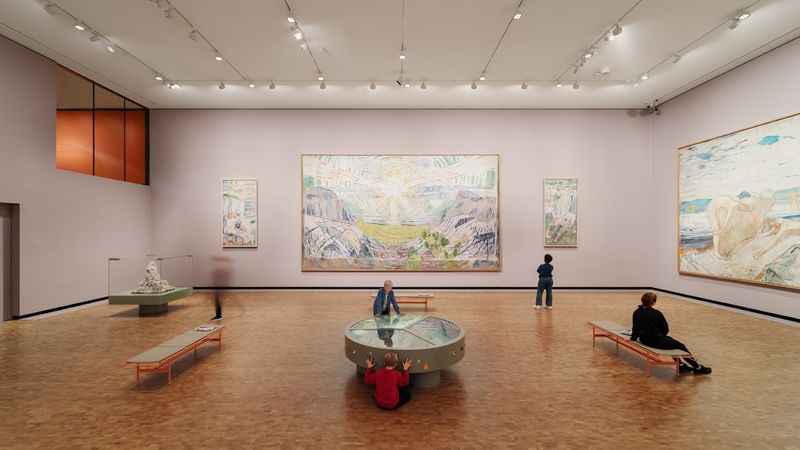
For art fans and admirers of the famous Norwegian artist Edvard Munch, a trip to Oslo's Munch Museum is a must.
This museum, which is not far from the famous Oslo Opera House, houses a sizable collection of Munch's works, including his well-known painting "The Scream."
You can view Munch's works of art, learn about his life and artistic development, and recognize the importance of his contributions to the field of art.
For those who enjoy art, the Munch Museum provides a thrilling experience by presenting the distinctive and potent creations of this renowned Norwegian artist.
20. Learn Some History at The Kon-Tiki Museum
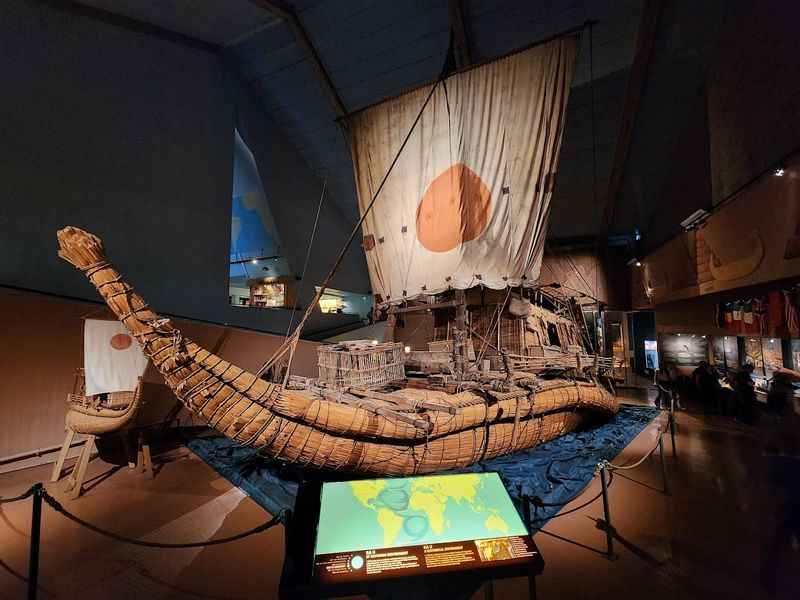
The Kon-Tiki Museum, located close to the Fram Museum in Oslo, offers an immersive experience of history and adventure.
This museum honors the illustrious Norwegian explorer Thor Heyerdahl, who became well-known throughout the world for his hazardous maritime voyages.
Visitors can discover more about Heyerdahl's incredible voyages, including his renowned Pacific Ocean crossing on the Kon-Tiki raft, at the Kon-Tiki Museum.
Additionally, visitors can explore Heyerdahl's accomplishments and obtain a fuller understanding of his contributions to anthropology and marine exploration through fascinating exhibitions, artifacts, and multimedia displays.
21. Feel Arctic Cold at The Fram Museum

Visitors have a one-of-a-kind chance to feel Arctic cold and learn about the fascinating history of arctic exploration at Oslo's Fram Museum.
Through exhibitions, multimedia displays, and preserved artifacts, this museum, which highlights the renowned polar exploration ship "Fram", offers a unique experience.
Here, you will learn about the daring expeditions of legendary explorers such as Roald Amundsen and Fridtjof Nansen, who braved the harsh Arctic conditions aboard the Fram.
The museum is a great winter attraction because it is open even during Christmas. Visitors can explore the museum and then visit the Christmas markets to really experience the holiday mood.
22. Admire the Longstanding Akershus Fortress

The Akershus Fortress in Oslo city center is a famous medieval fortress that has stood for centuries.
Throughout its lengthy history, it has functioned as a royal residence, a military fortress, and a representation of strength and defense.
Visitors may admire the fortress' magnificent walls, towers, and battlements, which provide sweeping views of Oslo and the harbor.
Explore the medieval grounds, discover its fascinating history, and take in the peaceful ambiance of this enduring monument in central Oslo.
23. The Royal Palace
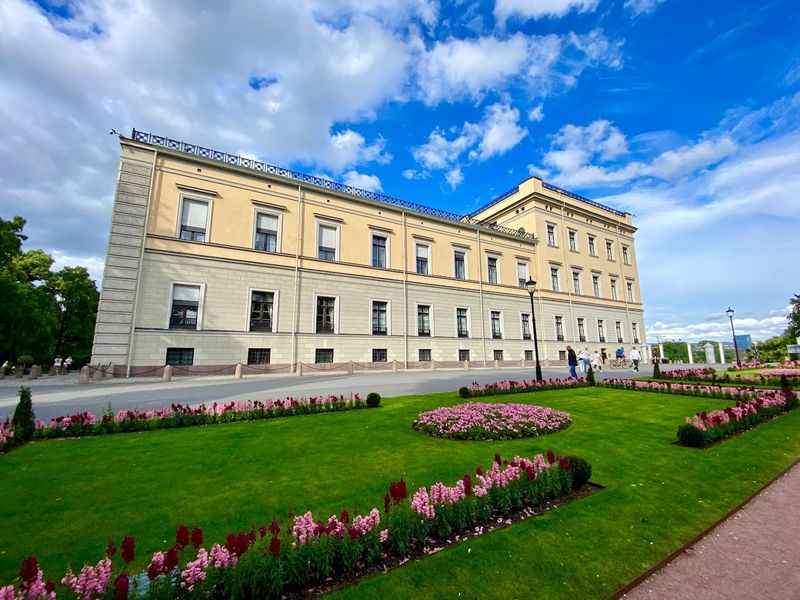
For those who are interested in history and royalty, the Royal Palace, which is located in Oslo City Center and near Oslo City Hall, is a must-visit.
King Charles III John, a French-born monarch who ruled Norway, previously had his royal residence in this magnificent structure, which is surrounded by the expansive Palace Park.
Visitors can take in the magnificence of the palace's architecture and stroll around the lovely Palace Square, which provides a tranquil respite from the activity of the city.
The Royal Palace in Oslo is definitely worth a visit if you have an interest in history, architecture, or simply the splendor of royal palaces.
24. Visit The Frogner Park and Vigeland Sculpture Park
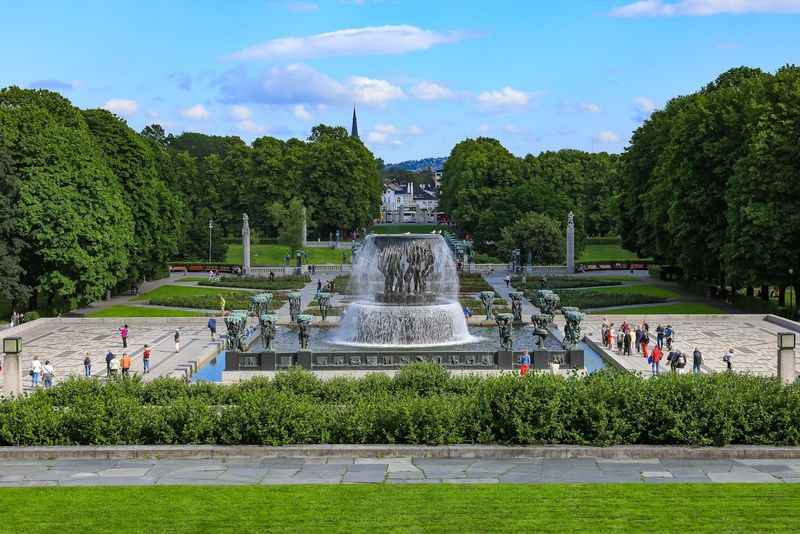
For both art lovers and environmentalists, a trip to Oslo's Frogner Park and Vigeland Sculpture Park is essential. One of Norway's biggest parks, Frogner Park, is the location of the famed Vigeland Park and Vigeland Museum.
The park is home to approximately 200 elaborate sculptures by Gustav Vigeland that show the human figure in a range of expressions and attitudes.
The park is the ideal location for a leisurely stroll or a tranquil picnic because it has lush green areas, tranquil lakes, and colorful flower gardens.
The Frogner Park, Vigeland Museum, and Vigeland Park are not to be missed, whether you're an art fan or just want to lose yourself in the beauty of nature.
25. Visit The Norwegian Armed Forces Museum
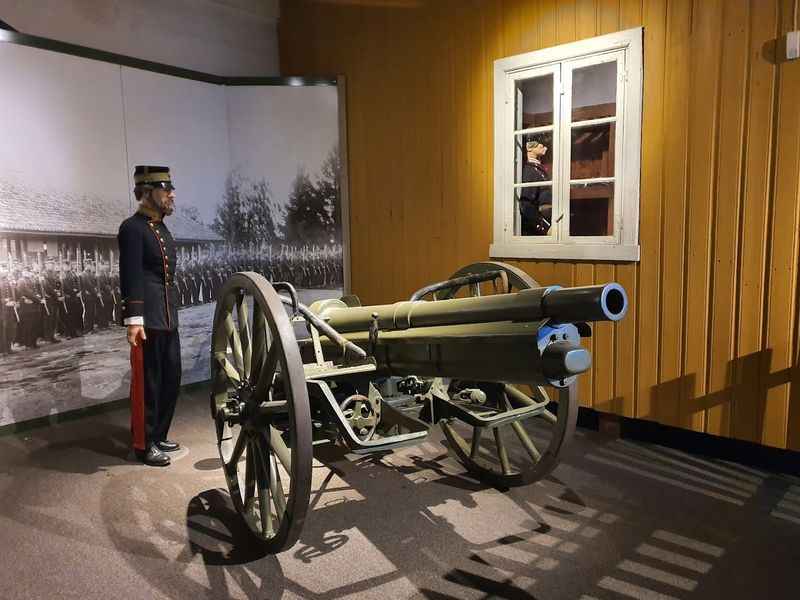
Oslo's Norwegian Armed Forces Museum provides an intriguing look into Norway's military past.
The museum offers visitors an immersive experience to learn about Norway's military forces and their contributions to national defense.
Exhibits include weaponry, uniforms, vehicles, and artifacts from numerous conflicts.
A trip to this museum is a rewarding and informative experience, regardless of your level of interest in military history or desire to learn more about Norway's armed forces.
26. Go See The Nobel Peace Center

The Oslo-based Nobel Peace Center is a museum whose goals are to advance peace and highlight the contributions of Nobel Peace Prize laureates.
Visitors can discover more about the inspirational people and their outstanding contributions to humanitarian and peace causes through interactive exhibits, multimedia displays, and thought-provoking installations.
A trip to this museum is a compelling experience that illuminates the significance of peace and the extraordinary people who have worked toward it through thought-provoking exhibitions and captivating displays.
27. Have a Relaxing Time at The Tjuvholmen City Beach
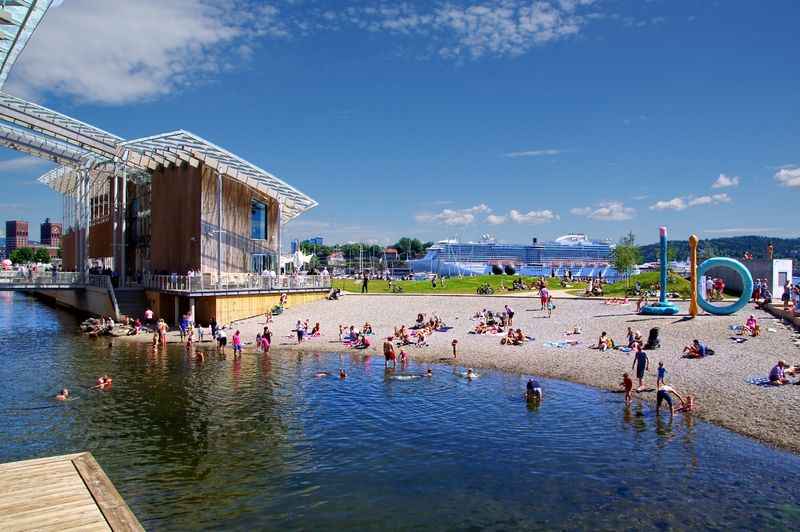
Those seeking a peaceful and attractive respite by the water might find it at Tjuvholmen City Beach in downtown Oslo.
It's the perfect place to unwind, soak up the sun, and take in the breathtaking views with its sandy shoreline, clear waters, and picturesque surroundings.
This beach is a serene haven for a leisurely escape from the city, whether you're strolling down the shore, swimming, or just relaxing on the sand.
FAQs
In this section, you will find answers to frequently asked questions about things to do in Oslo, Norway.
Is Oslo worth visiting?
Yes, Oslo, Norway, is definitely worth visiting. For instance, you can head down to the Oslo Fjord where you can sail and take in the stunning views, appreciate the vibrant contemporary Norwegian art and modern art scenes, and get an opportunity to visit the iconic Royal Palace. Oslo, Norway, offers a unique and enriching travel experience that is sure to captivate any traveler's heart.
Is 2 days enough for Oslo?
While 2 days in Oslo, Norway can give you a taste of the city's highlights, such as the Holmenkollen Ski Museum, the Astrup Fearnley Museum, the Fjord, guided tours to the five National Museums, or Oslo sightseeing, it may not be enough time to fully explore and appreciate all the diverse things to do in Oslo, Norway.
What is Oslo Norway best known for?
Oslo, Norway, is best known for its rich history, breathtaking fjords, iconic landmarks such as the Oslo Opera House and the Royal Palace, as well as its vibrant contemporary art scene and national museums, making it a unique and captivating destination for travelers. You'll need an Oslo pass to visit certain places.
How many days is enough to visit Oslo?
The ideal amount of time to spend in Oslo would largely depend on the interests and preferences of the visitor, but in general, 3–4 days would allow for a more thorough exploration of the things to do in Oslo.
Summing Up: The Best Things to Do in Oslo, Norway
As we've covered, there is no shortage of things to do in Oslo.
This wonderful city offers it all, whether you're a history nerd ready to learn about Norwegian heritage and King Harald, an admirer of the Oslo Cathedral architecture, a fan of the Oslo Opera House, or a culture enthusiast eager to delve into Viking history.
Oslo has enough to offer everyone, from beautiful fjords to famous sites. So, gather your belongings, take a trip to Oslo, and get ready to experience an extraordinary journey rich in culture, history, and adventure.













